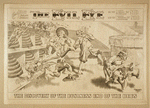Acceptance, I finally
reach it.
But something is wrong.
Grief is a circular staircase.
I have lost you.
---Linda Pastan, excerpted from the poem "The Five Stages of Grief" reprinted in On Doctoring: Stories, Poems, Essays (Eds. Richard Reynolds and John Stone)
In this wry, and a certain points, satiric poem Linda Pastan exposes the less clinical side of the experience of grief. I selected this poem because its final lines manage to convey the feeling of futility--the sisyphean experience of grief. One vicariously senses not only circularity but falling down the staircase. Here is the poem in full:
The night I lost you
someone pointed me towards
the Five Stages of Grief.
Go that way, they said,
it's easy, like learning to climb
stairs after an amputation.
And so I climbed.
Denial was first.
I sat down at breakfast
carefully setting the table
for two. I passed you the toast--
you sat there. I passed
you the paper--you hid
behind it.
Anger seemed more familiar.
I burned the toast, snatched
the paper and read the headlines myself.
But they mentioned your departure,
and so I moved on to
Bargaining. What can I exchange
for you? The silence
after storms? My typing fingers?
Before I could decide,
Depression
came puffing up, a poor relation
its suitcase tied together
with string. In the suitcase
were bandages for the eyes
and bottles of sleep. I slid
all the way down the stairs
feeling nothing.
And all the time Hope
flashed on and off
in defective neon.
Hope was a signpost pointing straight in the air.
Hope was my uncle's middle name,
he died of it.
After a year I am still climbing
thought my feet slip on your stone face.
The treeline
has long since disappeared;
green is a color
I have forgotten.
But now I see what I am climbing
towards:
Acceptance
written in capital letters,
a special headline:
Acceptance,
its name in lights.
I struggle on,
waving and shouting,
Below, my whole life spreads its surf,
all the landscapes I've ever known
or dreamed of. Below
a fish jumps: the pulse
in your neck.
Acceptance, I finally
reach it.
But something is wrong.
Grief is a circular staircase.
I have lost you.






